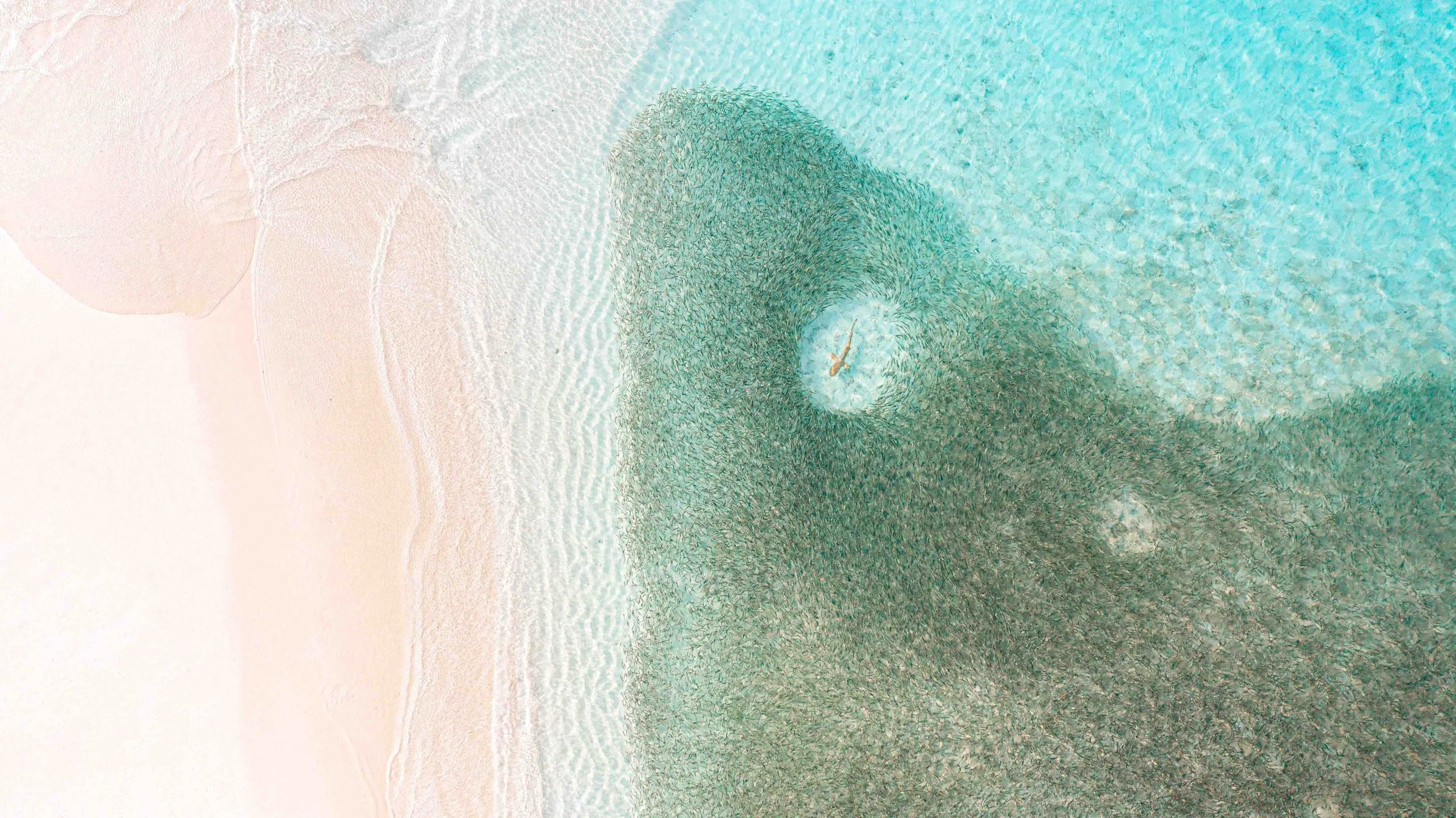ELEVATE AERIAL SHOTS
Aerial photography is becoming increasingly popular, especially among photographers looking for new ways to capture breathtaking locations from a truly unique perspective. Here are 10 essential tips to elevate your drone photography to the next level.
1. Shoot RAW
You’ve probably heard it a thousand times, but it’s worth repeating.. always shoot in RAW for drone photography.
RAW files store uncompressed sensor data and metadata, giving you far more control in post-processing. This allows you to adjust colour, exposure, and contrast without introducing posterization or losing details issues that commonly appear with JPEG files.
Most modern drones support RAW, and models like DJI Mavic 4 Pro deliver excellent results in this format.
2. Take a “Selfie”
Aerial photography is all about scale. We’ve all seen countless landscape and cityscape shots from above, but adding a human figure or recognisable object immediately transforms the image. Place yourself (or a friend) in the frame to emphasize size and perspective. A person lying on the ground, someone standing in the centre, or even props like a surfboard, bicycle, or car can give your shot a striking focal point.
3. Focus on the Landscape
Let the natural scenery work in your favour. Drone photography allows you to find patterns and symmetry invisible from the ground. Winding roads, geometric rooftops, reef formations, or repeating architectural shapes. Tools like Google Earth are excellent for pre-planning as the 3D mode helps you study landscapes from above and determine ideal altitudes. You can save your planned shots beforehand so you arrive at the location fully prepared.
4. Mix and Match Colours
Contrast is your best friend. Locations with two strong, opposing colours create visually powerful images that immediately grab attention. That said, a calm palette of complementary hues such as different shades of blue or green can create equally stunning, serene images when composed thoughtfully.
5. Capture Silhouettes
Even though subjects may appear small from above, their shadows can tell a story.
Shoot early in the morning or late afternoon when the sun sits low, creating long, dramatic silhouettes that stretch across your frame.
6. Shoot the Horizon
Horizon shots are incredibly dynamic when captured from a drone. Move your camera around, change your angle, and experiment with depth. Golden hour is one of the best times for this — warm tones of gold and tangerine elevate the entire frame. Including a person or object facing the horizon can add extra mood and storytelling.
7. Watch the Weather
Weather shifts quickly, so monitor conditions before and during your flight.
Ideal settings include bright skies with minimal wind — strong gusts reduce battery life significantly as your drone works harder to stay stable. Regardless of the forecast, always bring extra batteries. You’ll never regret it.
8. Choose the Best Altitude
Higher isn't always better. Flying too high can make your shot look flat or cluttered. Experiment with different heights to see which angle best highlights your subject. Often, flying slightly lower gives you stronger compositions and more intentional framing. If you’re new to your drone, test its range and altitude limits beforehand so you know exactly what’s possible once you’re on location.
9. Manage Your Exposure Levels
The final image may appear brighter or darker than what you see on your screen, so accurate exposure is key.
Use your histogram it shows the distribution of brightness values in your photo.
• Peaks far left = too dark
• Peaks far right = too bright
Ideally, keep the peaks toward the middle without touching either wall. In bright settings, like beaches, slight overexposure is sometimes intentional and visually pleasing. If highlights or shadows are impossible to evenly expose, take multiple shots at different exposures and blend them later.
10. Don’t Shoot Against the Sun
It sounds simple, but it’s an easy mistake to make. Shooting into the sun can blow out your highlights and create harsh, unusable images. Whenever possible, position the sun behind your drone — treat it like any other light source.
Bonus Tip: Be Confident
The best way to improve your aerial photography is simply to fly more. Confidence comes with experience, experimentation, and making mistakes along the way. Push yourself to explore new ideas and angles your creativity is what truly sets your images apart.
We hope these tips inspire you to create unique and meaningful aerial shots that go far beyond the typical overhead view. Don’t forget to explore our articles page for more guides and inspiration!






